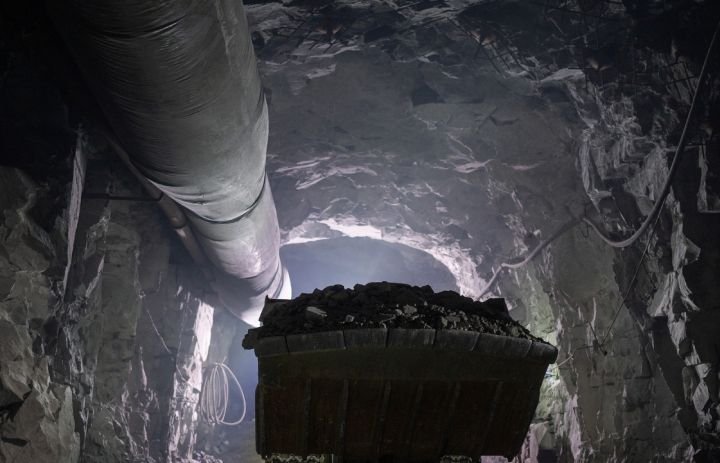Though there are very few silver mines in India, the nation’s relationship with silver dates back thousands of years.
Historical evidence shows that ancient silver mining activities took place in India during the Maurya period, particularly at the Dariba and Agucha sites.
Indian society places a high value on silver, considering it auspicious and of economic significance. The rising industrial applications have further enhanced the importance of this precious metal.
Currently, the domestic production of Silver in India is modest, and most of the Silver used is imported from other countries or from recycling the existing resources.
Also, most Silver mined in India comes as a by-product recovered from processing other ores like lead, zinc, copper, and gold. There is only one direct silver reserve in the country.
Nevertheless, several silver mines in India hold significant reserves. Let us look into the details of those silver mines.


1. Sindesar Khurd Mine
Located in Rajasthan, Sindesar Khurd Mine is the World’s second-largest Silver producing mine, producing 5.5 million tonnes of silver ore per annum. This high-grade silver mine, which is also India’s largest underground mine and is owned by Vedanta Resources.
The average silver grade in this mine is 140-160 grams per tonne of ore. This mine alone produces 25-30% of the silver production in India.
This mine produced 15.08 million ounces of Silver during 2023, which significantly increased from 10.872 million ounces in 2021.
The unique deposition of the ore body at Sindesar Khurd mine allows for efficient ore extraction, making it a cost-effective operation.
The mine is well equipped with modern machines and advanced technology, and features fully automated operations in several areas of mining. This helped in the effective extraction and processing of the materials.
Initially, Sindesar Khurd operated as a satellite mine to Rajpura Dariba Mine.
Mineralization of Silver in this mine had occurred with ore minerals Sphalerite and galena, which are used for extracting lead and zinc. The occurrence of native Silver is in trace amounts.
Long-hole stopping with paste backfill is the method of mining followed in this mine.
With an estimated operational life until 2029 or much more with further explorations, Sindesar Khurd remains a reliable source of Silver among all the silver mines in India.
2. Zawar Mine
Zawar is a group of four mines: Mochia, Balaria, Zawarmala, and Baroi. All these mines are located 40km from Udaipur in the state of Rajasthan.
It is primarily a zinc mine and is also known for its Silver, which is extracted as a by-product while zinc is being processed in this mine. Other metals that are extracted while processing in this mine are lead and cadmium.
For the year 2019-20, the ore production is at 3.3 million tonnes in Zawar mines, and the company aims to increase its ore production capacity to 4.7 Mtpa by 2025-26.
The Zawar group of mines have great historical significance, and the ancient mining activities in these mines date back 2000 years. It makes the Zawar mines the oldest mined site among all the Silver mines in India.
It is an underground mine and uses the long hole open stoping method for mining the ore.
Mineralization occurs in disseminated stratiform, vein and massive-type ores. Silver primarily occurs as inclusions in galena and as discrete silver sulfite.
3. Rampura Agucha Mine
Located in Rajasthan’s Bhilwara district, Rampura Agucha Mine is one of the largest zinc and lead mines in the World.
This mine is primarily a Zinc and lead-producing mine; however, it also produces Silver in significant quantities. In 2023, this mine had produced 6.31 million ounces of Silver.
Currently, Rampura Agucha Mine produces 4.8 million tonnes of ore. It is a stratiform, sediment-hosted Zinc, lead and silver deposit.
The mine contains massive sulfide deposits that yield silver as a by-product during the refining of lead and zinc.
Owned by Hindustan Zinc Limited, a subsidiary of Vedanta Resources, it is an underground mine that employs long-hole open stopping with paste fill method for mining purposes.
4. Rajpura Dariba Mine
This underground Zinc, Lead, and Silver mine located in Rajasthan is one of India’s key silver mines and was commissioned in 1983.
Rajpura Dariba Mine produced 1.0 million tonnes of ore in 2019-20 and gradually increased production capacity. Now, the mine is working to improve production to 4.0 Mtpa by constructing new mills and introducing new machinery and cutting-edge technology.
Mining is done using the long hole stopping method with backfilling using paste and hydrofilling.
The total reserves and resources of Rajpura Dariba mine are 90.3 MT with a current reserve of 51.3 Mt. Galena and Sphalerite, along with minor Silver bearing fahlore, which are the main ore minerals of this mine.
In 2023, this mine produced an estimated 1.47 million ounces of Silver.
5. Kayad Mine
Owned by Hindustan Zinc under Vedanta Resources, Kayad Mine production started in the year 2012-13.
Initial exploration work was done by the Geological Survey of India during the late 1980s.
Kayad Mine is primarily a zinc-lead mine. Silver is recovered from the lead-zinc deposits while processing the ore.
For the year 2024-25, this mine has produced 0.7 million tonnes of Ore. Kayad is a relatively small mine and still holds reserves and resources of 8.1 million tonnes.
In this underground mine, the mining method employed is a long hole open stoping with rock fill. Also, the ore produced here is transported and processed at Rampura Agucha mine mills.
Mineralization in this mine occurs in quartz mica schist along with calc-silicate rock. The main ore minerals are Sphalerite and galena, along with minor quantities of chalcopyrite and other sulphites.
6. Hutti Mine
Hutti Gold Mine is the major operational mine among all the Gold mines in India. Even though Hutti is a gold mine, Silver was recovered as a co-product while gold was refined.
7. Khetri copper mine complex
Located in Rajasthan, the Khetri copper mine complex primarily focuses on copper production, but also produces small amounts of silver and gold during the refining process.
In the Khetri mine, the availability of Silver is estimated to be less than 1 gram per tonne of ore.
8. Harnai Mines
Harnai Mines, present in Pratapgarh, Rajasthan, is also one of the significant silver mines in India. It is an underground mine.
9. Bharak Silver deposit
The only silver deposit where Silver is available in native form in India in considerable amounts is the Bharak Silver deposit.
Located in Rajasthan, it is a small mine with few silver resources.
Silver From Smelters
During the smelting and refining process of lead, zinc, and copper concentrates, miners recover silver as a by-product. There are such several smelters in India.
Some of the famous smelters are:
- Chanderiya and Debari Smelters, Rajasthan
- Tundoo and Moubandar smelters, Jharkhand
- Vishakhapatnam smelter, Andhra Pradesh
- Hindalco Smelters (from imported copper concentrates), Gujarat.









